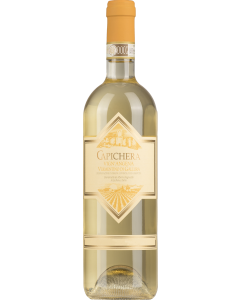
If you’re a wine lover like us, you probably like to build your 2025 Christmas menu around your wine. This is the best time of year to bring out those special bottles you’ve been waiting to try and savor them with your nearest and dearest. In this guide we’ll share what we’ll be drinking for this year’s feast and our top tips for achieving the perfect pairing at home.
Festive Pairing Cheat Sheet
| Wine type | Best food pairings | What Our Wine Experts Are Drinking |
|---|---|---|
|
Sparkling wines |
Light canapes and appetizers like smoked salmon, oysters, cheese gougères |
|
|
Light, fresh white wines |
Grilled fish, seafood, salads, creamy dips, antipasti, lighter appetizers |
|
|
Richer, oaked white wines |
Roast turkey, roast chicken, creamy risottos, truffle mash, fish in a creamy sauce, roasted vegetables |
Château des Quarts Pouilly-Fuissé Premier Cru Aux Quarts 2022 |
|
Medium red wines |
Roast turkey, roast chicken, stuffed pork, mushroom risottos and sauces, vegetable gratins |
|
|
Bold, structured red wines |
Roast beef, lamb and venison, hearty stews, pies, beef wellington |
|
|
Sweet or slightly sweet full-bodied wines |
Desserts and cheeseboards |
Sommelier-Approved Tips for the Perfect Pairing

Balance is key
The basis of a great pairing is balance. Sometimes you want crisp and refreshing wines to match the clean, crisp flavors in seafood, grilled fish and raw vegetables. Other times you’re looking for rich, creamy white wines like a full-bodied Viognier to match the rich creaminess of a risotto or pasta sauce. Look for wines that balance with your dish rather than competing or being overwhelmed.
Match flavors together
For really easy pairing ideas, look at matching the flavors in your wine and food together. For example, the creamy texture and toasty vanilla notes of an oaky Chardonnay go great with roast chicken or lobster. Or try matching a slightly smoky, meaty Syrah from the Rhone Valley with rich barbecued or chargrilled meats.
Break all the rules
When it comes to the perfect pairing, there’s no such thing as the “wrong” wine. Maybe you love drinking big reds with seafood or an elegant Riesling with your steak. That’s absolutely fine. We always say you should drink the wines you enjoy!
Ask an expert
And if you’re still not sure what to choose, why not check out our Christmas Premium Tasting Case which includes a sparkling, two whites and three reds specially selected by our wine experts to pair perfectly with your Christmas feast. Inside you’ll find a delicious bottle of Grand Cru Champagne and a Cremant to toast your loved ones in style, a perfect oaky Chardonnay for the turkey or fish, and three blockbuster reds from South Africa, the Rhone, and Rioja for heartier meat dishes.
- Christmas Premium Tasting Case6 bottles, Mixed
The Aperitif

Whether you celebrate on Christmas Eve or on December 25th, set a warm and cosy tone for the evening by gathering friends and family for an aperitif. Why not put out a few sharing plates of charcuterie, Comté or Manchego with fig jam, and smoked salmon on blinis paired with a glass of Champagne or Cremant to awaken the appetite.
Champagne Jacquesson Cuvée 748 is a luxurious small-batch grower Champagne that’s perfect for the first toast of the night.
Henri Champliau Crémant de Bourgogne Authentique Brut is made in Burgundy using the same winemaking technique used for Champagnes.
Crisp White Wines for Starters and Light Christmas Dishes
Fresh, vibrant white wines are natural partners for lighter dishes like seafood, antipasta, and salads. Naturally-high acidity levels make them great palate cleansers for richer, creamy dishes like arancini, risotto, or a hearty fish stew.
Greywacke Sauvignon Blanc 2024 is a classic New Zealand Sauvignon made by pioneering Marlborough winemaker Kevin Judd who has spent the last 25 years putting the region on the map. Greywacke is named after the big river stones which add a subtle minerality to the wine.
Capichera Vign’Angena Vermentino 2024 captures Sardinian sunshine in a glass.
Ca dei Frati I Frati Lugana 2024 is this indigenous white comes from the family-run Ca’ dei Frati estate near Italy’s Lake Garda which dates back to the 18th century.
Elegant Wines for Roast Turkey or Chicken

Roast poultry is often the star of the show at festive family gatherings, and it’s worth showing off your bird by matching it to the perfect wine. Chicken or turkey can work well with both red and white wines as long as they are medium-bodied with modest tannins and refreshing acidity.
Château des Quarts Pouilly-Fuissé Premier Cru Aux Quarts 2022 is a luxurious white Burgundy that punches high above its retail price.
La Rioja Alta Viña Ardanza Reserva 2019 hails from one of Spain’s most prestigious historic wineries which was founded in 1890 by five local families.
Best Red Wines for Roast Beef, Lamb, and Game
Robust beef, lamb and game dishes call for intense red wines with serious flavors and powerful structure. Think full-bodied reds from regions like the Rhone Valley, southern Italy, and warmer regions of the New World like Shiraz from Barossa Valley or Cabernet Sauvignon from Napa.
Domaine du Grand Tinel Cuvée Alexis Establet Châteauneuf-du-Pape 2022 is named after Alexis Establet who acquired the estate’s first vineyards back in 1846.
Meerlust Rubicon 2022 is a juicy Bordeaux-style red from Stellenbosch in South Africa that offers a modern take on full-bodied festive reds.
Elena Fucci Titolo Aglianico del Vulture 2022 from Italy’s sunbaked Basilicata region is crafted from volcanic soils on Mount Vulture and 50-100 year old vines that give it a unique smoky minerality.
Zýmē Kairos 2020 is composed of 15 different varieties, 4 of which are white, and aged in barriques for 36 months. Zyme winery is at the cutting edge of Italian winemaking thanks to founder Celestino Gaspari who learnt his craft under the legendary Giuseppe Quintarelli.
Best Wines for Ham and Duck

The rich, savory flavors of ham and duck call for special wines with unique characters. A baked ham or duck confit typically has sweet glazes or sauces that need a wine to complement them rather than clash. They’re with wines that offer enough personality, freshness, and polish to stand up to these bold meats.
Mordorée Tavel Rosé “La Reine des Bois” 2024 is what we like to call a “winter rosé” with enough punch and spice to balance hearty duck or ham dishes.
Agricola Punica Barrua 2020 is a polished red blend from Sardinia’s premier producer crafted from Carignan and a dash of Cabernet Sauvignon.
Mora & Memo Nau Cannonau di Sardegna 2023 is another spectacular gastronomic wine from the Italian island of Sicily. The winery sits on the hills overlooking the Mediterranean in south-eastern Sardinia which helps lock in plenty of freshness and aromatics.
Best Wines for Christmas Desserts and Cheese
No Christmas feast is complete without a sumptuous dessert and cheese course served with decadent sweet wines like Sauternes, Tokaji or late harvest wines. Pair your wine with a dessert that’s equally sweet to avoid making the wine taste bitter or flat.
Fasoli Gino Alteo Amarone della Valpolicella 2017 is a sumptuous choice for your cheese board thanks to the traditional appassimento technique. The grapes are left to dry out over the winter and become raisins which naturally concentrates both sugars and flavors.
































Delivery was quick, safe and as described. Will order again.